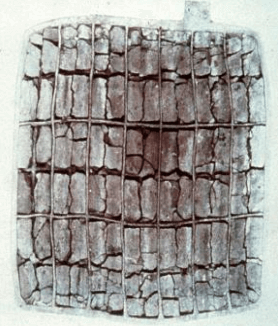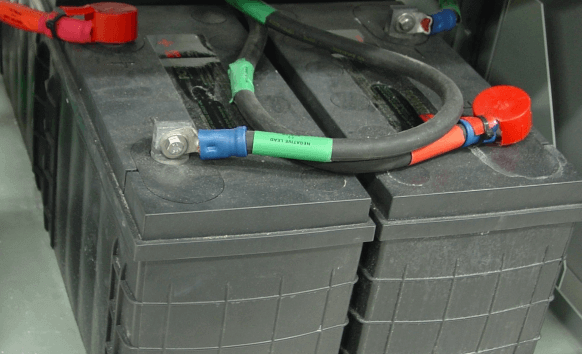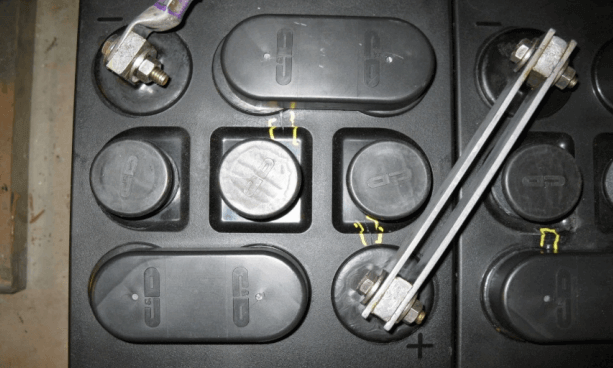The Lead-Acid Battery is a sacrificial design with unavoidable degradation over time. The inside of a battery cell is a highly chemically active environment.
Lead is soft, so in order to make the plates more rigid, in most of the early designs, antimony was added as a hardening agent. The percentage of antimony was high, in some cases up to 12%. The downside was that the higher the percentage of antimony caused increased hydrogen evolution which resulted in water loss which increased with battery age and resulted in more maintenance.
In the 1930’s, Bell Labs, the R&D arm of the Bell companies at that time, was tasked with coming up with a battery that would solve the water loss problem, came up with the Lead-Calcium cell. The telephone companies were by far the largest users of stationary lead-acid batteries, adopted the lead-calcium cell en masse. The rest of the world went in another direction preferring a reduced antimony with lead selenium additive designs.
The problem with the lead calcium design is that the calcium introduces a new issue. It causes the positive plate to grow (expand) because of oxidation as the battery ages. This growth is unavoidable and is exacerbated if the battery is overcharged, operated at an elevated temperature (over 77°F) or under a constant float charge. It can be argued that the calcium additive reduces watering intervals and maintenance costs, but the fact is that battery life is reduced especially with VRLA Absorbed Glass Mat (AGM) battery cells which are now dominating certain markets such as UPS.
Corrosion of positive plate grid structure converts the base material to:
- Lead dioxide
- Lead peroxide
- Lead sulphate
Even under ideal conditions positive grid corrosion, (frequently called positive plate growth) since the plate actually grows in size, occurs. Positive Plate Growth has the following characteristics:
- It occupies more volume.
- It has higher resistivity (lower conductance).
- It becomes more brittle.
- The plate strength is lowered.
- The grid cross-sectional area decreases.
- The grid and straps are weakened.
- There is a loss of electrical contact with the active material.
- Active material is shed.
- There is a loss of the conductance path.
- There is an increase of mechanical stresses.
- There is a permanent loss of capacity.
- It can cause post seal leakage.
- It can cause Internal short circuits.
- It can result in the eventual failure of the conduction path.
The following pictures demonstrate the effect. Note that new and aged plates shown are of different plate designs. These are called pasted flat positive plates because the active material, lead oxide PbO2, is pasted on to a cast grid of a lead alloy, in this case, leadcalciu PbCa.


The following figure demonstrates how cycling effects the positive plate structure. As the battery is discharged and recharged, the positive plates expand and contract causing it to crack and corrode.

The following pictures demonstrate cover crack most likely caused by positive plate growth. Note that the cracks and post growth emanate from the positive posts.


Please note that all battery cover cracks are not confined to any manufacturer or are caused by positive plate growth. The same applies to post seal leaks. There have been cases of cover cracks and post seal growth and leaks being caused by defective cover materials and rough handling, bad installation, stress on posts by incorrect installation of inter-cell connectors and cables. etc.
It is the authors experience that many issues are caused by the battery being overcharged or being operated at an elevated temperature without temperature compensated charging being applied.
What is being done about the problem?
The current trend in North American stationary battery manufacturing is to add small amounts of tin to the positive plate. This helps to increase the mechanical strength, increase the shelf life and reduce corrosion. In some cases, calcium is eliminated completely giving rise to a pure lead/tin battery.
Need a Copy of What You Just Read?
Download the PDF version of this white paper for future reference.

